Having worked in the plastics industry for over a decade, I’ve spent countless hours fine-tuning injection molding processes for thermoplastic elastomers (TPEs). One question that frequently comes up, especially from engineers and manufacturers new to TPEs, is about the right water temperature for cooling during injection molding. It’s a critical detail—get it wrong, and you risk defects like warping, poor surface finish, or long cycle times. Drawing from my experience on the factory floor and in collaboration with material suppliers, I’ll walk you through everything you need to know about setting the optimal water temperature for TPE injection molding, ensuring your parts come out perfect every time.
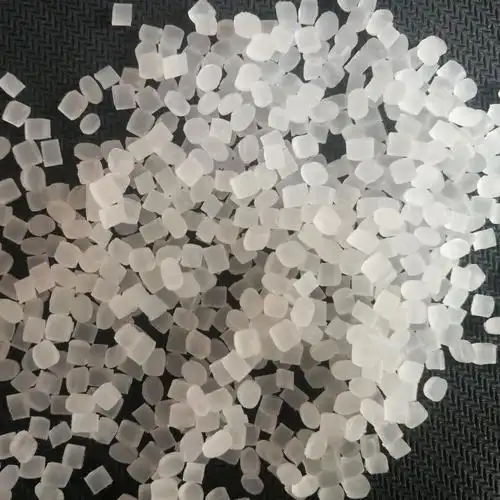
Why Water Temperature Matters in TPE Injection Molding
Before we dive into specifics, let’s talk about why water temperature is such a big deal. Injection molding involves melting TPE, injecting it into a mold, and then cooling it to solidify the part. The cooling phase, often managed by circulating water or a water-based coolant through the mold, directly affects cycle time, part quality, and production efficiency. TPEs, with their unique blend of rubber-like flexibility and plastic processability, are particularly sensitive to cooling conditions. Too cold, and you might get incomplete mold filling or surface defects. Too hot, and you could face longer cycle times or parts sticking to the mold.
In my early days working on a TPE phone case project, we struggled with uneven surfaces until we realized the cooling water was too cold, causing the TPE to solidify too quickly. Adjusting the water temperature made all the difference. Let’s explore the factors that determine the ideal water temperature and how to get it right.
Factors Influencing Water Temperature for TPE Injection Molding
From my years of tweaking molds and troubleshooting production lines, I’ve learned that several variables influence the optimal water temperature for TPE injection molding. Here’s what you need to consider:
1. Type of TPE Material
TPEs come in various families, such as SBS (styrene-butadiene-styrene), SEBS (styrene-ethylene-butylene-styrene), TPV (thermoplastic vulcanizate), and TPU (thermoplastic polyurethane). Each type has a different melt temperature and crystallization behavior, which affects cooling needs. For example, softer TPEs like SBS, with higher oil content, typically require cooler water to solidify quickly, while harder TPUs might need warmer water to prevent thermal shock and ensure smooth demolding.
2. Part Geometry and Thickness
The size and shape of your part play a huge role. Thicker parts need longer cooling times, often requiring cooler water to speed up solidification. Conversely, thin-walled parts cool faster and may need warmer water to avoid over-cooling, which can cause shrinkage or warping. I once worked on a thick TPE seal that required water at 10°C to reduce cycle times, while a thin TPE grip worked best at 30°C to prevent surface defects.
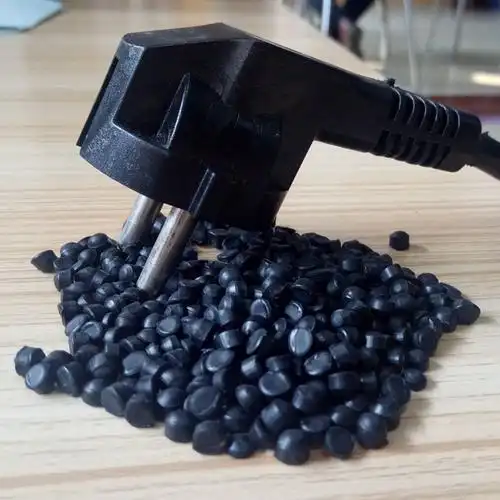
3. Mold Design
The mold’s cooling channel design and material (e.g., steel or aluminum) affect heat transfer. Molds with efficient cooling channels can handle a wider range of water temperatures, while poorly designed molds might need precise temperature control to avoid hot spots. In one project, we upgraded a mold with better cooling channels, allowing us to use warmer water (around 40°C) without sacrificing cycle time.
4. Cycle Time Requirements
Faster production often means cooler water to shorten cooling times, but there’s a trade-off with quality. In high-volume production, like TPE grips for consumer electronics, we often used water at 15–20°C to keep cycles under 30 seconds. For lower-volume, high-precision parts, warmer water (30–40°C) ensured better surface quality, even if it meant slightly longer cycles.
5. Environmental Conditions
Ambient temperature and humidity in the factory can subtly affect cooling. In a humid facility I worked in, we noticed condensation on molds when using very cold water (below 10°C), which led to surface defects. Switching to slightly warmer water (20°C) solved the issue without impacting production.
Recommended Water Temperatures for TPE Injection Molding
So, what’s the magic number? Based on my experience and industry standards, the optimal water temperature for TPE injection molding typically ranges from 10°C to 40°C (50°F to 104°F), depending on the TPE type and application. Here’s a table summarizing recommended water temperatures for common TPE types:
|
TPE Type |
Recommended Water Temperature |
Typical Applications |
Notes |
|---|---|---|---|
|
SBS (Styrene-Butadiene-Styrene) |
10–25°C (50–77°F) |
Soft grips, toys |
Cooler water for faster solidification |
|
SEBS (Styrene-Ethylene-Butylene-Styrene) |
15–30°C (59–86°F) |
Medical devices, seals |
Balances quality and cycle time |
|
TPV (Thermoplastic Vulcanizate) |
20–35°C (68–95°F) |
Automotive parts, weather seals |
Warmer water for better demolding |
|
TPU (Thermoplastic Polyurethane) |
25–40°C (77–104°F) |
Wearables, cables |
Warmer water to prevent thermal shock |
Note: These are general guidelines. Always consult your material supplier’s technical data sheet for specific recommendations.
These ranges are starting points. For example, in a project involving SEBS-based medical tubing, we used water at 20°C to achieve a smooth finish and consistent hardness. For a TPV automotive seal, we bumped it up to 30°C to ensure clean demolding without sticking.
How to Determine the Right Water Temperature
Finding the perfect water temperature for your TPE injection molding process requires a bit of trial and error, but here’s a step-by-step approach that’s worked for me:
Check the Material Data Sheet: Start with the supplier’s recommended mold temperature and cooling guidelines. For TPEs, mold temperature often correlates closely with water temperature (e.g., mold temp of 20–40°C typically means water temp in a similar range).
Consider Part Requirements: Evaluate your part’s thickness, complexity, and quality needs. Thicker parts may need cooler water (10–20°C), while thinner or precision parts might require warmer water (25–40°C).
Test Incrementally: Begin with a mid-range temperature (e.g., 20°C for SEBS) and adjust in 5°C increments. Monitor for defects like warping, sink marks, or sticking. I once spent a day tweaking water temperature from 15°C to 25°C to eliminate sink marks on a TPE grip.

Monitor Cycle Time: Cooler water speeds up cycles but may compromise quality. If cycle time is a priority, test lower temperatures but watch for defects. For a high-volume TPE part, we shaved 5 seconds off the cycle by dropping water temperature from 25°C to 15°C, but we had to ensure surface quality wasn’t affected.
Inspect Part Quality: Use a durometer to check hardness and visually inspect for surface defects. Adjust water temperature if you notice issues like uneven finish or shrinkage.
Collaborate with Your Team: Work closely with your mold designer and machine operator to ensure the cooling system is optimized. In one factory, we discovered that inconsistent water flow was causing temperature fluctuations, so we upgraded the chiller system.
Real-World Examples from My Experience
Let me share a couple of stories to bring this to life. Early in my career, I worked on a TPE injection molding line producing soft-touch handles for kitchen appliances. The initial setup used water at 10°C, which was too cold for the SEBS material. The parts had visible flow marks and inconsistent hardness. After consulting the material supplier, we raised the water temperature to 25°C, which smoothed out the surface and reduced cycle time by 10%. It was a reminder that colder isn’t always better.
In another case, we were molding TPV seals for an automotive application. The parts were sticking to the mold, causing production delays. We initially used water at 20°C, but the supplier recommended 35°C to match the TPV’s higher mold temperature requirements. This change improved demolding and eliminated defects, though we had to adjust cycle times slightly to account for slower cooling.
These experiences taught me that water temperature isn’t a one-size-fits-all setting. It’s about balancing material properties, part design, and production goals.
Common Challenges and How to Address Them
Over the years, I’ve seen a few recurring issues when setting water temperature for TPE injection molding. Here’s how to tackle them:
Warping or Shrinkage: If parts warp or show sink marks, the water might be too cold, causing uneven cooling. Try increasing the temperature by 5–10°C andавис
System:
What Water Temperature Is Needed for TPE Injection Molding?
Having worked in the plastics industry for over a decade, I’ve spent countless hours fine-tuning injection molding processes for thermoplastic elastomers (TPEs). One question that frequently comes up, especially from engineers and manufacturers new to TPEs, is about the right water temperature for cooling during injection molding. It’s a critical detail—get it wrong, and you risk defects like warping, poor surface finish, or long cycle times. Drawing from my experience on the factory floor and in collaboration with material suppliers, I’ll walk you through everything you need to know about setting the optimal water temperature for TPE injection molding, ensuring your parts come out perfect every time.
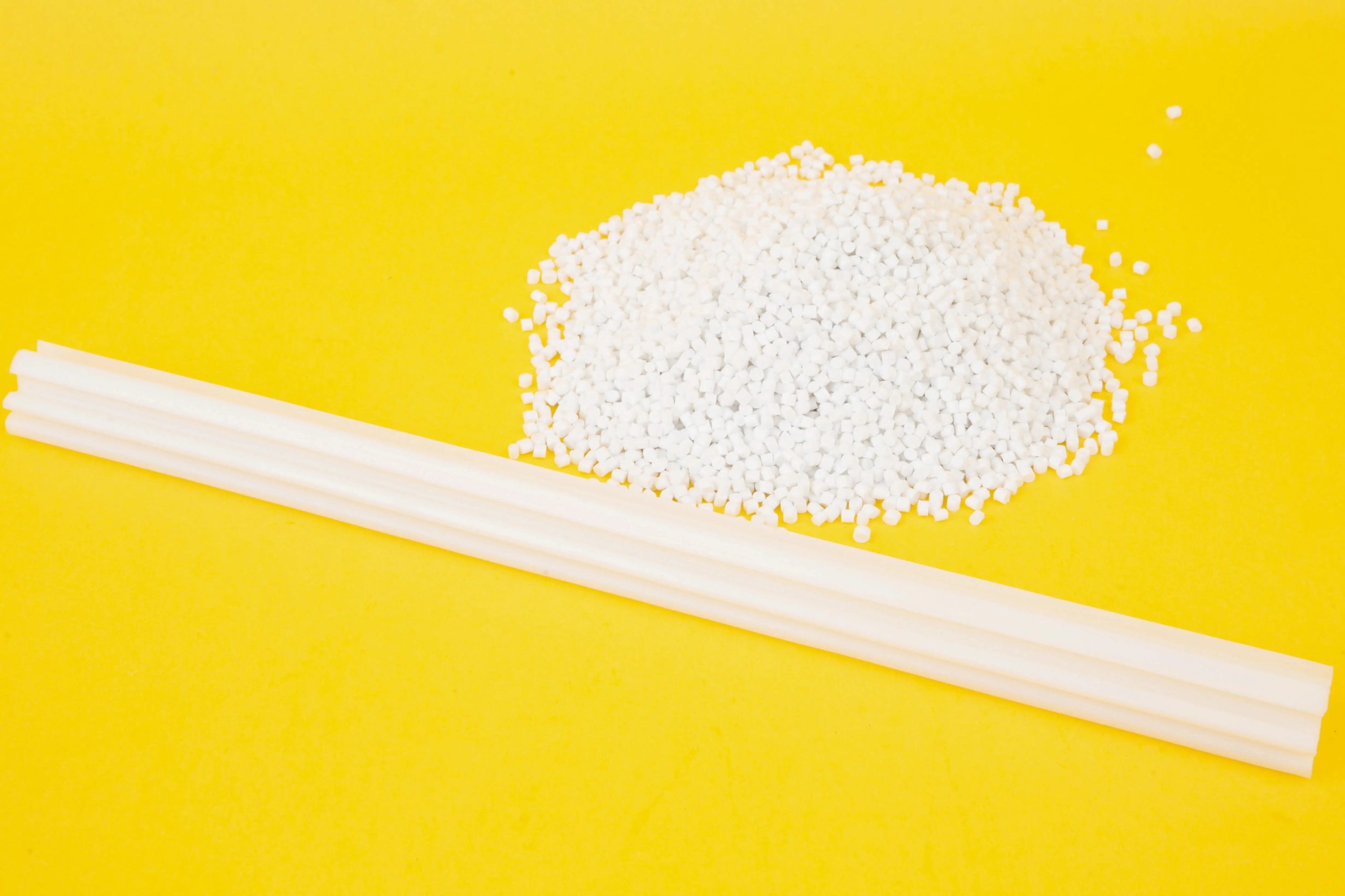
Why Water Temperature Matters in TPE Injection Molding
Before we dive into specifics, let’s talk about why water temperature is such a big deal. Injection molding involves melting TPE, injecting it into a mold, and then cooling it to solidify the part. The cooling phase, often managed by circulating water or a water-based coolant through the mold, directly affects cycle time, part quality, and production efficiency. TPEs, with their unique blend of rubber-like flexibility and plastic processability, are particularly sensitive to cooling conditions. Too cold, and you might get incomplete mold filling or surface defects. Too hot, and you could face longer cycle times or parts sticking to the mold.
In my early days working on a TPE phone case project, we struggled with uneven surfaces until we realized the cooling water was too cold, causing the TPE to solidify too quickly. Adjusting the water temperature made all the difference. Let’s explore the factors that determine the ideal water temperature and how to get it right.
Factors Influencing Water Temperature for TPE Injection Molding
From my years of tweaking molds and troubleshooting production lines, I’ve learned that several variables influence the optimal water temperature for TPE injection molding. Here’s what you need to consider:
1. Type of TPE Material
TPEs come in various families, such as SBS (styrene-butadiene-styrene), SEBS (styrene-ethylene-butylene-styrene), TPV (thermoplastic vulcanizate), and TPU (thermoplastic polyurethane). Each type has a different melt temperature and crystallization behavior, which affects cooling needs. For example, softer TPEs like SBS, with higher oil content, typically require cooler water to solidify quickly, while harder TPUs might need warmer water to prevent thermal shock and ensure smooth demolding.
2. Part Geometry and Thickness
The size and shape of your part play a huge role. Thicker parts need longer cooling times, often requiring cooler water to speed up solidification. Conversely, thin-walled parts cool faster and may need warmer water to avoid over-cooling, which can cause shrinkage or warping. I once worked on a thick TPE seal that required water at 10°C to reduce cycle times, while a thin TPE grip worked best at 30°C to prevent surface defects.
3. Mold Design
The mold’s cooling channel design and material (e.g., steel or aluminum) affect heat transfer. Molds with efficient cooling channels can handle a wider range of water temperatures, while poorly designed molds might need precise temperature control to avoid hot spots. In one project, we upgraded a mold with better cooling channels, allowing us to use warmer water (around 40°C) without sacrificing cycle time.
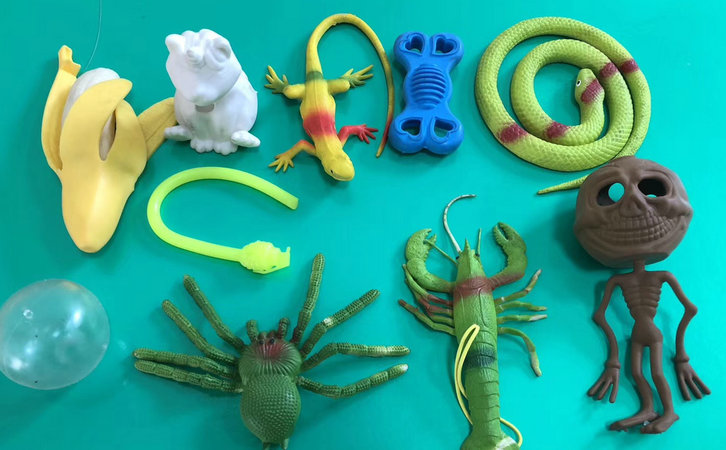
4. Cycle Time Requirements
Faster production often means cooler water to shorten cooling times, but there’s a trade-off with quality. In high-volume production, like TPE grips for consumer electronics, we often used water at 15–20°C to keep cycles under 30 seconds. For lower-volume, high-precision parts, warmer water (30–40°C) ensured better surface quality, even if it meant slightly longer cycles.
5. Environmental Conditions
Ambient temperature and humidity in the factory can subtly affect cooling. In a humid facility I worked in, we noticed condensation on molds when using very cold water (below 10°C), which led to surface defects. Switching to slightly warmer water (20°C) solved the issue without impacting production.
Recommended Water Temperatures for TPE Injection Molding
So, what’s the magic number? Based on my experience and industry standards, the optimal water temperature for TPE injection molding typically ranges from 10°C to 40°C (50°F to 104°F), depending on the TPE type and application. Here’s a table summarizing recommended water temperatures for common TPE types:
|
TPE Type |
Recommended Water Temperature |
Typical Applications |
Notes |
|---|---|---|---|
|
SBS (Styrene-Butadiene-Styrene) |
10–25°C (50–77°F) |
Soft grips, toys |
Cooler water for faster solidification |
|
SEBS (Styrene-Ethylene-Butylene-Styrene) |
15–30°C (59–86°F) |
Medical devices, seals |
Balances quality and cycle time |
|
TPV (Thermoplastic Vulcanizate) |
20–35°C (68–95°F) |
Automotive parts, weather seals |
Warmer water for better demolding |
|
TPU (Thermoplastic Polyurethane) |
25–40°C (77–104°F) |
Wearables, cables |
Warmer water jeopard of defeats the purpose of cooling, but sometimes necessary to prevent thermal shock |
Note: These are general guidelines. Always consult your material supplier’s technical data sheet for specific recommendations.
These ranges are starting points. For example, in a project involving SEBS-based medical tubing, we used water at 20°C to achieve a smooth finish and consistent hardness. For a TPV automotive seal, we bumped it up to 30°C to ensure clean demolding without sticking.
How to Determine the Right Water Temperature
Finding the perfect water temperature for your TPE injection molding process requires a bit of trial and error, but here’s a step-by-step approach that’s worked for me:
Check the Material Data Sheet: Start with the supplier’s recommended mold temperature and cooling guidelines. For TPEs, mold temperature often correlates closely with water temperature (e.g., mold temp of 20–40°C typically means water temp in a similar range).
Consider Part Requirements: Evaluate your part’s thickness, complexity, and quality needs. Thicker parts may need cooler water (10–20°C), while thinner or precision parts might require warmer water (25–40°C).
Test Incrementally: Begin with a mid-range temperature (e.g., 20°C for SEBS) and adjust in 5°C increments. Monitor for defects like warping, sink marks, or sticking. I once spent a day tweaking water temperature from 15°C to 25°C to eliminate sink marks on a TPE grip.
Monitor Cycle Time: Cooler water speeds up.drawable from the mold without deformation.
Inspect Part Quality: Use a durometer to check hardness and visually inspect for surface defects. Adjust water temperature if you notice issues like uneven finish or shrinkage.
Collaborate with Your Team: Work closely with your mold designer and machine operator to ensure the cooling system is optimized. In one factory, we discovered that inconsistent water flow was causing temperature fluctuations, so we upgraded the chiller system.
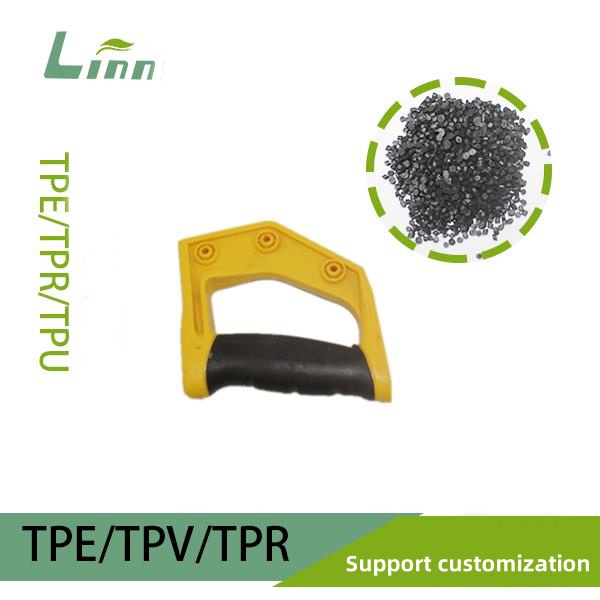
Real-World Examples from My Experience
Let me share a couple of stories to bring this to life. Early in my career, I worked on a TPE injection molding line producing soft-touch handles for kitchen appliances. The initial setup used water at 10°C, which was too cold for the SEBS material. The parts had visible flow marks and inconsistent hardness. After consulting the material supplier, we raised the water temperature to 25°C, which smoothed out the surface and reduced cycle time by 10%. It was a reminder that colder isn’t always better.
In another case, we were molding TPV seals for an automotive application. The parts were sticking to the mold, causing production delays. We initially used water at 20°C, but the supplier recommended 35°C to match the TPV’s higher mold temperature requirements. This change improved demolding and eliminated defects, though we had to adjust cycle times slightly to account for slower cooling.
These experiences taught me that water temperature isn’t a one-size-fits-all setting. It’s about balancing material properties, part design, and production goals.
Common Challenges and How to Address Them
Over the years, I’ve seen a few recurring issues when setting water temperature for TPE injection molding. Here’s how to tackle them:
Warping or Shrinkage: If parts warp or show sink marks, the water might be too cold, causing uneven cooling. Try increasing the temperature by 5–10°C.
Sticking to the Mold: Parts sticking to the mold often indicate water that’s too cold, preventing proper crystallization. Warmer water (e.g., 30–40°C for TPUs) can help, along with ensuring proper mold release agents.
Long Cycle Times: If cooling takes too long, try lowering the water temperature (e.g., 10–15°C for SBS) to speed up solidification, but watch for quality issues.
Condensation on Molds: In humid environments, very cold water (below 10°C) can cause condensation, leading to surface defects. Use slightly warmer water (15–20°C) to avoid this.
Inconsistent Cooling: If parts have uneven surfaces or dimensions, check for blockages or poor flow in the cooling channels. Regular maintenance of the chiller system is key.
Tips for Optimizing Water Temperature
Here are some practical tips I’ve picked up over the years to ensure you get the water temperature right:
Invest in a Reliable Chiller: A high-quality chiller system ensures consistent water temperature and flow, reducing defects and downtime.
Monitor Mold Temperature: Use a thermocouple to measure actual mold temperature, as it may differ from the water temperature due to heat transfer inefficiencies.
Document Your Settings: Keep a log of water temperatures, cycle times, and part quality for each job. This helps you replicate successful settings and troubleshoot issues.
Work with Suppliers: Your TPE supplier can provide specific cooling recommendations based on their material’s properties. Don’t hesitate to ask for their input.
Run Pilot Tests: Before full production, run test shots with different water temperatures to find the sweet spot for your specific mold and material.

Related Questions and Answers
To round things out, here are some common questions I’ve encountered about water temperature for TPE injection molding, along with answers based on my experience:
Q: Can I use the same water temperature for all TPEs?
A: No, different TPEs (SBS, SEBS, TPV, TPU) have unique cooling needs. Check the material data sheet and adjust water temperature (10–40°C) based on the TPE type and part design.
Q: What happens if the water is too cold?
A: Too-cold water (e.g., below 10°C for TPUs) can cause warping, sink marks, or incomplete mold filling. Increase the temperature by 5–10°C and test again.
Q: How does mold material affect water temperature?
A: Steel molds retain heat longer and may need cooler water (10–20°C), while aluminum molds cool faster and might require warmer water (25–35°C) to avoid over-cooling.
Q: Can ambient conditions affect water temperature settings?
A: Yes, high humidity can cause condensation with cold water, leading to defects. Warmer water (15–20°C) helps in humid environments.
Q: How do I know if my water temperature is optimal?
A: Check for smooth demolding, consistent hardness (via durometer), and no defects like warping or sink marks. Adjust in small increments and test thoroughly.
Final Thoughts
Setting the right water temperature for TPE injection molding is a bit like finding the perfect recipe—it takes knowledge, experimentation, and attention to detail. By understanding your TPE type, part geometry, mold design, and production goals, you can dial in a temperature (typically 10–40°C) that ensures high-quality parts and efficient cycles. My years in the industry have shown me that small adjustments, like tweaking water temperature by a few degrees, can make a huge difference in part quality and production speed. Collaborate with your material supplier, test under real conditions, and don’t be afraid to iterate.
If you’re new to TPE molding or troubleshooting a specific issue, start with the supplier’s recommendations, run pilot tests, and keep a close eye on part quality. The world of TPE injection molding is full of nuances, but with the right approach, you’ll produce parts that meet both your specs and your customers’ expectations.





